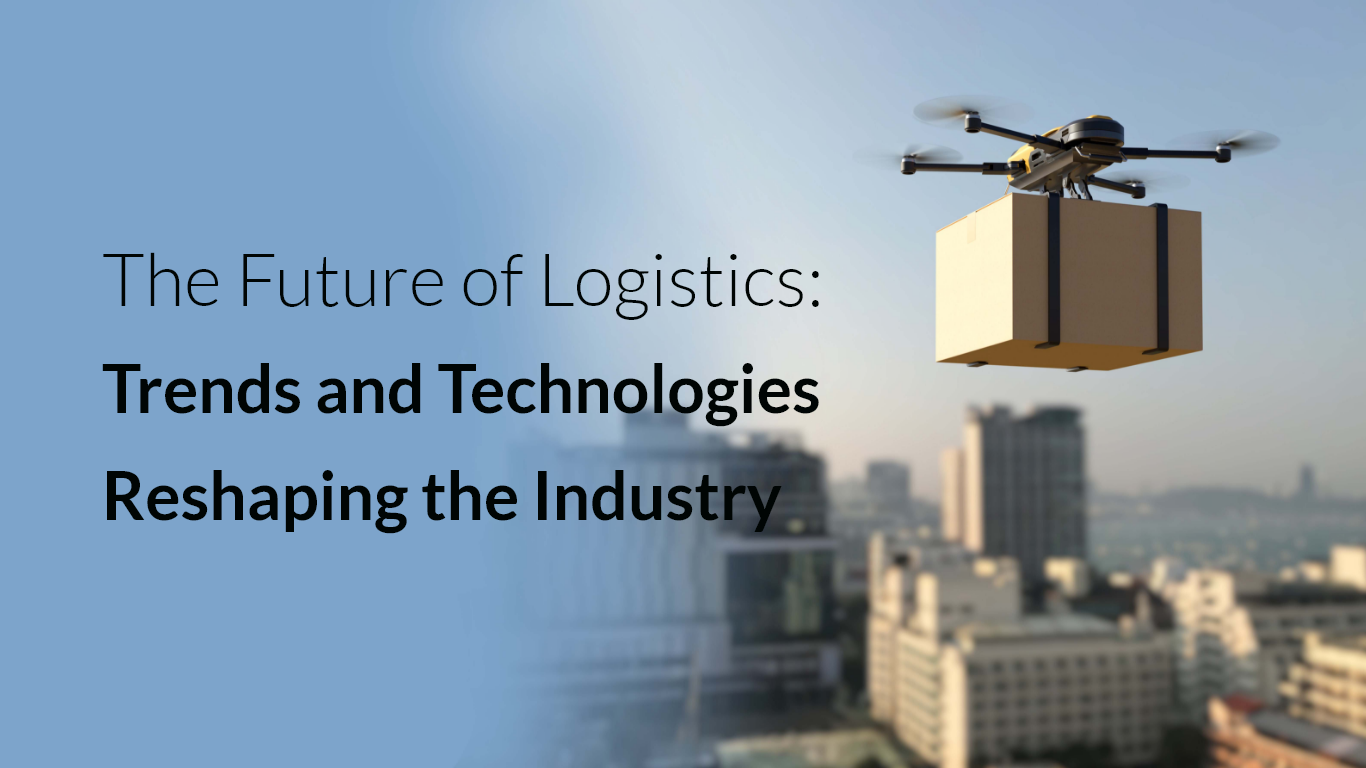Logistics is the backbone of global commerce, encompassing the intricate processes that ensure goods move efficiently from supplier to consumer. As industries evolve and consumer expectations shift, the role of logistics has become increasingly pivotal. Today, the integration of advanced technologies is revolutionising how logistics operations are managed, enhancing efficiency, reducing costs, and improving service levels.
Automation in Logistics
Automation has emerged as a game-changer in logistics, offering significant advantages in terms of speed, accuracy, and cost-effectiveness. Automated guided vehicles (AGVs) and robotic arms are transforming warehouse operations by automating picking, packing, and sorting tasks. This speeds up the fulfilment process and minimises errors, thereby improving overall customer satisfaction.
AI (Artificial Intelligence) in Logistics
Artificial Intelligence (AI) is powering predictive analytics and machine learning algorithms that optimise route planning and fleet management. AI-driven systems analyse vast amounts of data to predict demand patterns, anticipate disruptions, and recommend the most efficient logistics routes. This capability not only reduces transportation costs but also enhances delivery reliability, crucial in meeting the demands of today’s fast-paced market.
IoT (Internet of Things) in Logistics
The Internet of Things (IoT) is revolutionising logistics by providing real-time visibility into the movement and condition of goods throughout the supply chain. IoT-enabled sensors monitor factors such as temperature, humidity, and location, ensuring that perishable goods are transported under optimal conditions. This level of visibility enhances supply chain efficiency, reduces wastage, and improves inventory management accuracy.
AR/VR (Augmented Reality/Virtual Reality) in Logistics
Augmented Reality (AR) and Virtual Reality (VR) technologies are reshaping logistics training and operations. AR glasses guide warehouse personnel in picking and packing operations, reducing training time and error rates. VR simulations offer immersive training experiences for logistics professionals, preparing them for real-world scenarios in a safe and controlled environment.
Autonomous Vehicles
Autonomous vehicles, including trucks and drones, are poised to revolutionise last-mile delivery. Self-driving trucks can operate around the clock, reducing delivery times and costs while improving road safety. Drones offer the flexibility to deliver packages to remote or congested areas quickly and efficiently. However, widespread adoption faces challenges such as regulatory frameworks and public acceptance.
Digital Twins in Supply Chain Management
Digital twins create virtual models of physical assets and processes within the supply chain, allowing for simulations and optimizations in a virtual environment. By replicating real-world scenarios, logistics managers can test different strategies, predict outcomes, and optimise operations for maximum efficiency. Industries leveraging digital twins experience reduced downtime, improved asset utilisation, and enhanced decision-making capabilities.
Cloud Computing and Big Data
Cloud computing provides scalable storage and computational power, enabling logistics companies to manage vast amounts of data efficiently. Big data analytics extract actionable insights from this data, uncovering trends, patterns, and anomalies that drive informed decision-making. From demand forecasting to route optimization, cloud-based solutions empower logistics providers to stay agile and responsive in dynamic market conditions.
Predictive Analytics
Predictive analytics harness historical data and machine learning algorithms to forecast future trends and behaviours in logistics. By analysing factors such as consumer demand, weather patterns, and economic indicators, logistics companies can anticipate demand fluctuations, optimise inventory levels, and mitigate supply chain disruptions. This proactive approach minimises costs, enhances resource allocation, and improves overall operational efficiency.
Supply Chain Visibility
End-to-end supply chain visibility is crucial for maintaining operational transparency and meeting customer expectations for real-time tracking and traceability. Technologies like RFID (Radio Frequency Identification), blockchain, and advanced ERP (Enterprise Resource Planning) systems provide real-time insights into inventory levels, shipment status, and delivery timelines. Enhanced visibility enables faster response times to disruptions, enhances collaboration with stakeholders, and strengthens customer trust.
Sustainability Initiatives in Logistics
The logistics industry is increasingly embracing sustainability initiatives to reduce environmental impact and meet regulatory requirements. Companies are adopting eco-friendly packaging materials, optimising transportation routes to minimise carbon emissions, and investing in renewable energy solutions for warehouses and transportation fleets. These initiatives not only lower operational costs but also appeal to environmentally conscious consumers, enhancing brand reputation and market competitiveness.
Challenges and Considerations
While technology presents significant opportunities, logistics providers must navigate several challenges. Cybersecurity threats pose risks to interconnected systems, requiring robust IT infrastructure and data protection measures. Regulatory complexities, including international trade regulations and compliance requirements, demand careful navigation to ensure seamless operations across borders. Additionally, the integration of new technologies necessitates continuous training and upskilling of the workforce to harness their full potential effectively.
LogixPlatform for Enhanced Logistics Management
LogixPlatform is at the forefront of providing comprehensive logistics solutions that integrate many of the advanced technologies discussed. Their platform offers robust tools for automation, real-time tracking, and predictive analytics, making it easier for logistics companies to optimise their operations.
- Unified Platform: LogixPlatform combines various functionalities, including transportation management, warehouse management, and order management, into a single, cohesive platform. This integration simplifies the logistics process, reducing the need for multiple systems and enhancing operational efficiency.
- AI and Predictive Analytics: Leveraging AI, LogixPlatform enables precise demand forecasting and route optimization. By analysing historical data and current trends, the platform provides actionable insights that help logistics managers make informed decisions, reduce costs, and improve delivery times.
- Scalability and Flexibility: LogixPlatform is designed to scale with growing businesses, offering flexible solutions that can adapt to changing demands and market conditions. This scalability is crucial for companies looking to expand their operations and enter new markets.
Conclusion
In conclusion, the future of logistics is undeniably intertwined with technological advancements that promise to redefine efficiency, reliability, and sustainability across supply chains globally. From automation and AI-driven insights to IoT-enabled visibility and sustainable practices, logistics companies are poised to leverage these innovations to drive operational excellence and meet evolving customer expectations. Platforms like LogixPlatform exemplify how integrating these advanced technologies can streamline logistics operations, enhance visibility, and provide actionable insights for better decision-making. As technologies continue to evolve, embracing innovation and collaboration will be key to navigating challenges and seizing opportunities in the dynamic landscape of modern logistics.


